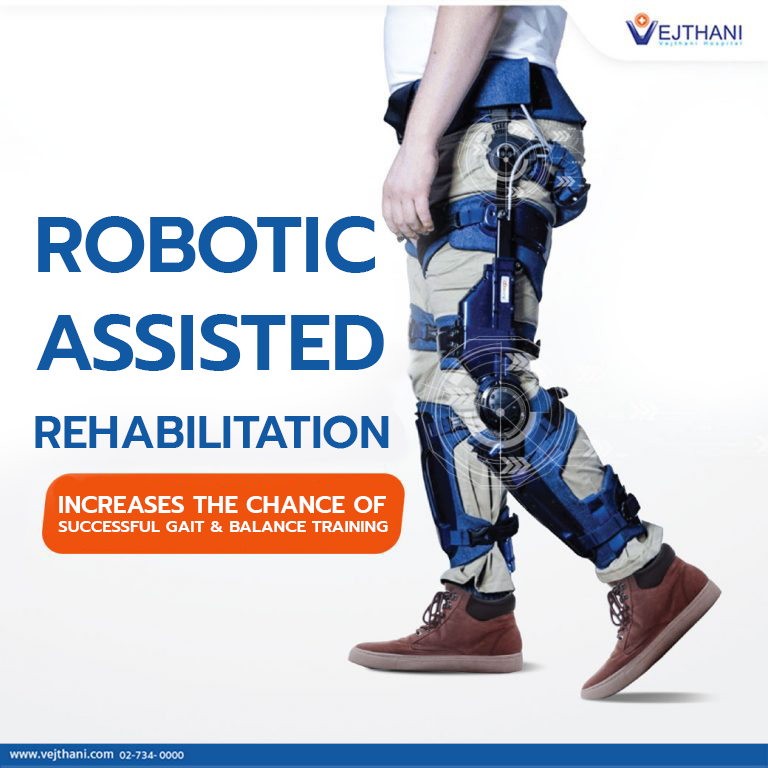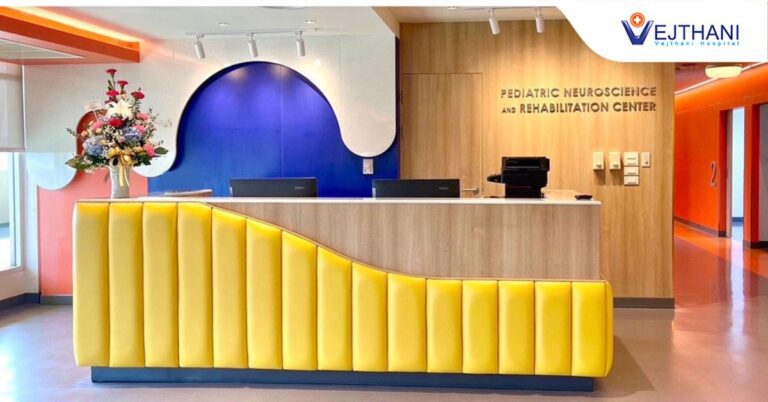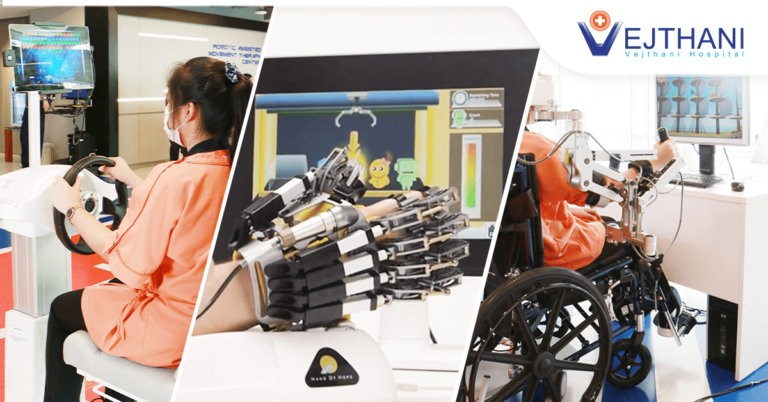

How is Robotic-Assisted Rehabilitation Better than Conventional Therapy?
- Robotic-assisted rehabilitation involves Task-Specific and Highly Repetitive Training, which stimulates nervous system that controls rhythmic motor pattern such as walking, known as Central Pattern Generator. This can better restore patient’s mobility than training with only conventional therapies.
- The robots help the joints to shift along the movements of the limbs. This allows the patients to put their legs back and forth in a correct structure and physiological system.
- The robots facilitate the patient to distribute equal pressure on both legs and restore body balance that result in a better ability to stand and walk.
- It strengthens leg and core muscles and makes it easier to maintain them. Patients are able to take longer steps, walk in a faster pace and farther distance.
- Reduces patient’s weariness in walking and standing during training, especially those who are extremely weak. Because the robots are designed to be precise with posture, cadence and mass when taking a step. It also helps supporting the body weight of the patients, which enable them to have longer and continuous training period until they reach an effective level.
- The robotic-assisted gait and balance training session can be trained in conjunction with games and virtual reality or VR that stimulates Multisensory Feedback and enhance the recovery of the nervous system along with Motor Relearning Program, which is a training of the movement through activities in realistic and proper environments.
- It able to measure the development level of the patients distinctly during the training, which further encourages them to continue with the sessions and result in better compliance and outcome.
Who is Compatible for Robotic-Assisted Rehabilitation?
- Patients diagnosed with stroke, paralysis, hemiplegia
- Patients with traumatic brain injury
- Patients diagnosed with Parkinson’s disease
- Spinal cord injury patient with paraplegia
- Multiple Sclerosis patients
- Elderly people with balance disorder, frequent falls
How Long Does Robot-Assisted Gait and Balance Training Take?
To achieve effective results, train with the robot for 3-5 times a week consistently for 2-6 weeks. Each training session should last 20-40 minutes.
*The amount of time each patient takes to train with the robot may vary upon the severity of the disease and their state of neurological recovery.
Why Start Robot-Assisted Gait and Balance Training at Advanced Rehabilitation Center in Vejthani Hospital?
- We are equipped with robotic-assisted gait and balance training machines that support all stages of neurological recoveries, including patients with weariness and balance disorder, those who wish to improve their walking speed, people who intend to return to activities that require high mobility and those who are dedicated to sports.
- Our physiatrists and physiotherapists are certified for practical training from the robot manufacturers and have been professionally trained by Physical Therapy Council.
- All patients will receive personalized rehabilitation treatment programs that will be accommodated to their development level during the training, which will lead to a higher chance of achieving better results.
For more information, contact
Advanced Rehabilitation Center, Vejthani Hospital
Call 02-7340000 or Ext. 2332
English Hotline: (+66)8-522 38888
- Readers Rating
- Rated 4.2 stars
4.2 / 5 ( Reviewers) - Excellent
- Your Rating



























